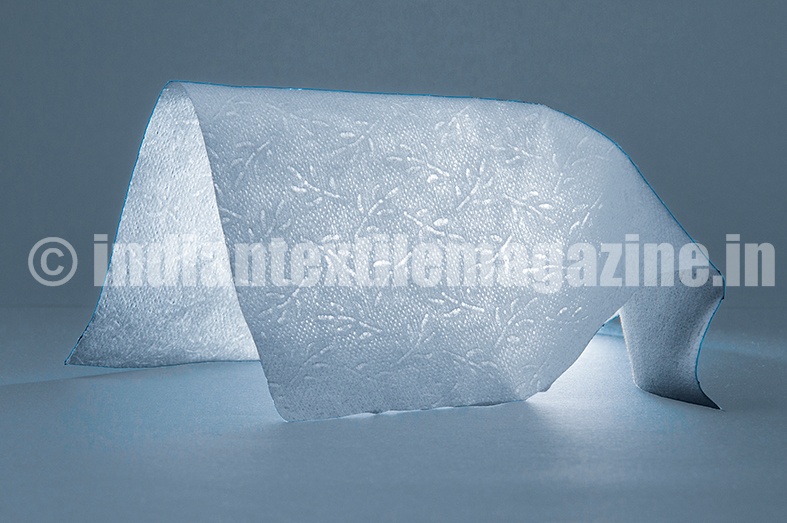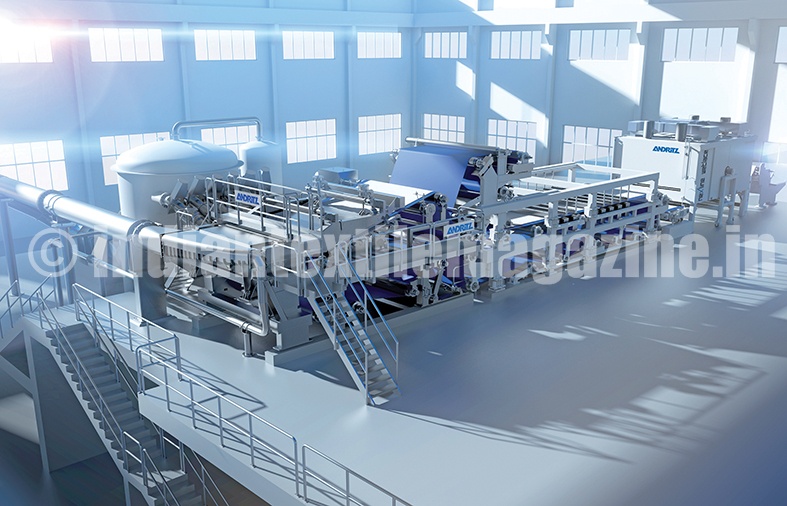The WC at home is often used to dispose of items other than toilet paper: fabric items and wipes for cosmetics, personal care and hygiene that really do not belong in there. These moist wipes are broken down very poorly in water, so they get into the drainage system, and from there to the wastewater treatment plants where they form enormous clumps and have to be removed at great effort and expense. The hygiene items manufacturers that produce these wipes from nonwoven materials are therefore working with system builders like Andritz Küsters GmbH in Krefeld to develop alternatives.
Managing Director, Andreas Lukas explains how the committed VDMA member specialising in processes and machine systems for paper finishing and nonwoven production is improving the environmental tolerability of hygiene products.
Excerpts:
Why do these kinds of nonwoven products not break down more readily?
Most damp wipe cloths have synthetic fibres embedded in them, so they are very poorly soluble, if at all. It must also be remembered that hygiene products for the face and body are often impregnated with lotions, fragrances for example. Given the situation of collapsing wastewater systems and increasingly stringent standards for drinking water quality, we are no longer dealing with an exclusively financial question – purifying wastewater is immensely expensive – but also an ecological problem which is becoming more urgent as the demand for moist wipes increases. Our engineers have been wrestling with the question of environmentally friendly nonwovens for some years now.
With the result that your systems can now manufacture degradable “flushable wipes”. Was this a home-grown idea?
Not entirely. The new development emerged from our dialogue with customers. As a builder of systems, some of which are designed for processing nonwovens, since 2002 we have also been affiliated with EDANA, the umbrella organisation for the European nonwoven industry. Years ago, at a trend forum held under the auspices of EDANA, the hygiene product manufacturers voiced their concern that non-flushable wipes might become a major headache in terms of environmental burden. Since our machines are supplied to practically every leading manufacturer of hygiene articles in the world and our systems are used for processing nonwoven webs, of course we immediately asked ourselves: What can we do to ensure that these items are eliminated in an environmentally friendly manner?
So a joint development project was born among the Andritz sister corporations, Perfojet, Asselin-Thibeau (both French) and Küsters. How is it progressing?
The starting situation was as follows: There are three properties in conventional wipes that render them unsuitable for flushing: The fact is that they are made from synthetic fibres, chemical binding agents and thermal bonding. All three make the products less readily degradable. So we addressed each aspect individually and tested them for improvement options: Regarding materials, instead of synthetic fibres we now use wetlaid nonwovens made from degradable cellulose fibres, such as are used to make tea bags among other things. It is well known that these materials can be disposed of with organic waste. Instead of the usual binders and their thermal bonding, our systems work with chemical-free hydroentanglement, also called “Wetlace”. At the end, we have nonwoven products like moist toilet paper and cosmetic wipes that dissolve in water quickly and completely.
Your “Wetlace” line was conceived not only to create a sustainable end product, but also to do justice to the “machinery footprint”. What is meant by that in real terms?
This is the response to the question: How much water and energy do I have to supply to a system in order to make, say, a ton of nonwoven web? As we develop our systems, we also consider the aspects of energy, water and material optimisation. In real terms, that means: The water used in the Wetlace process is collected, purified to drinkable standard, and reused elsewhere. Even some of the hot air used for drying the wetlaid nonwovens is recovered and returned for recirculating in the system to conserve energy. We have now advanced to the point where our systems use up to 20 per cent less energy than their predecessor lines.
Does demand for the “flushable wipes” already exist on the market?
Regarding demand, an unequivocal yes. The big hygiene product manufacturers are very interested, and the first products from them are already on the shelves. Besides the main components of hydroentanglement from the wetlace line, visitors to ITMA had the opportunity to inspect almost our entire portfolio of turnkey solutions for spunlace, needlepunch and wetlaid nonwovens and finishing.
Andritz Küsters GmbH is a member company of the Andritz technology group, which was founded in 1852 and now manages its global operations and 25,000 employees from its headquarters in Graz (Austria). Together with its French affiliates Andritz Asselin-Thibeau and Andritz Perfojet, Andritz Küsters develops, builds and markets innovative, sustainable technologies, machines and machinery systems for the nonwoven and textile industry. Andritz Küsters GmbH in Krefeld specialises in processes and systems for paper finishing and a nonwoven production, but it also offers technical solutions and services for a wide range of applications in the paper, nonwoven and textile industries.
“Our vision is market leadership in sustainable nonwoven technologies. So we have made it a part our mission to generate most of our turnover from the areas of sustainability, the environment and resource conservation.”
– Mr. Andreas Lukas, Managing Director, Andritz Küsters GmbH


